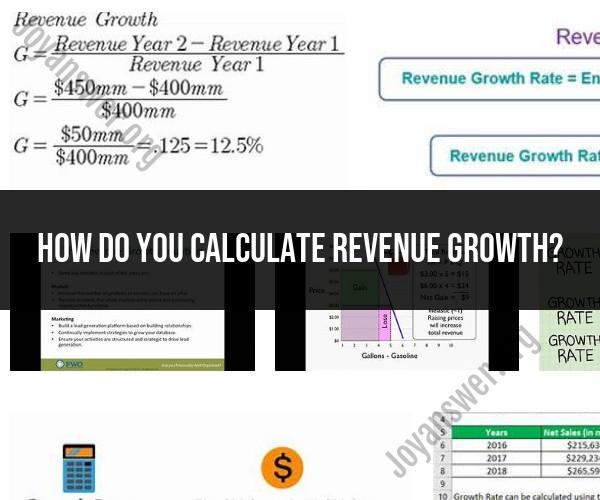How do you calculate revenue growth?
Revenue growth is a crucial metric for assessing a company's financial performance and business success. It measures the increase in a company's total revenue over a specific period of time, typically expressed as a percentage. To calculate revenue growth, you can use the following formula:
Revenue Growth (%) = [(Current Revenue - Previous Revenue) / Previous Revenue] × 100
Here's a step-by-step guide on how to calculate revenue growth:
Step 1: Determine the Time Period
Choose the time period for which you want to calculate revenue growth. This could be a quarter (three months), a year, or any other period you are interested in. Let's call this period "Time Period 2."
Step 2: Gather Revenue Data
Collect the revenue figures for the end of the chosen time period (Time Period 2). This is your "Current Revenue." Also, gather the revenue figures for the end of the previous time period (Time Period 1). This is your "Previous Revenue."
Step 3: Use the Formula
Plug the values into the formula for revenue growth:
Step 4: Perform the Calculation
Subtract the previous revenue from the current revenue, divide the result by the previous revenue, and multiply by 100 to express the result as a percentage.
Step 5: Interpret the Result
The result of the calculation will give you the revenue growth rate as a percentage. A positive revenue growth rate indicates an increase in revenue over the specified time period, which is generally seen as a positive sign for a company's financial health and business success. Conversely, a negative revenue growth rate suggests a decrease in revenue, which may indicate issues that need attention.
Example: Calculating Revenue Growth
Let's work through an example:
Suppose a company had revenues of $500,000 at the end of the previous year (Time Period 1) and revenues of $600,000 at the end of the current year (Time Period 2). Calculate the revenue growth rate for the company.
Determine the Time Period: Yearly comparison (Time Period 2 vs. Time Period 1).
Gather Revenue Data:
- Previous Revenue (Time Period 1) = $500,000
- Current Revenue (Time Period 2) = $600,000
Use the Formula:
Perform the Calculation:
Interpret the Result:
The revenue growth rate for the company is 20%. This indicates that the company's revenue increased by 20% from Time Period 1 to Time Period 2, which is a positive sign for its business success.











